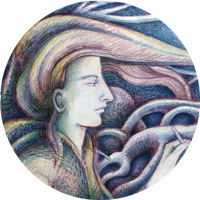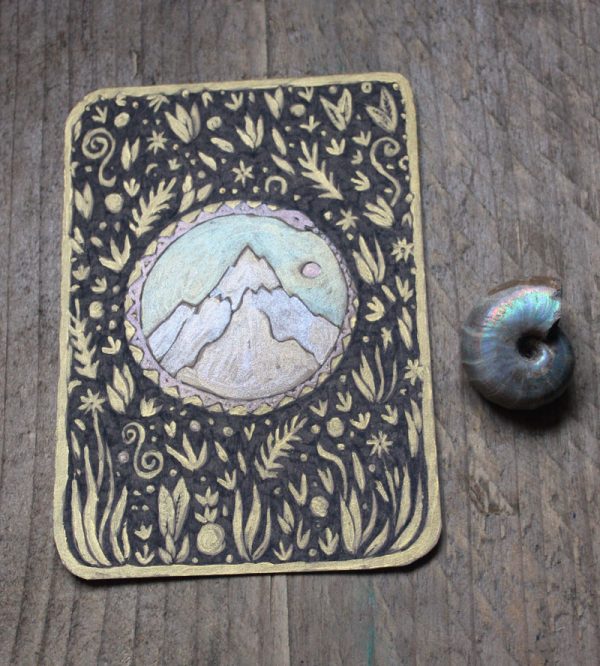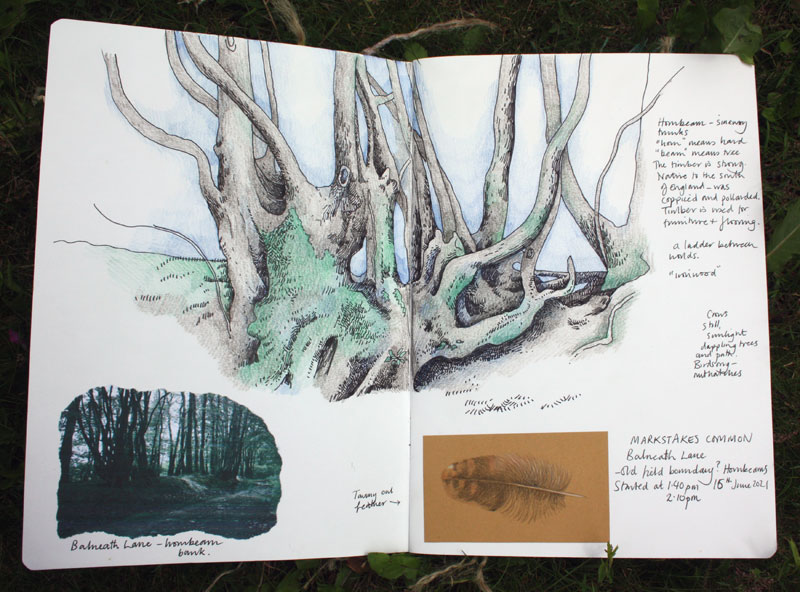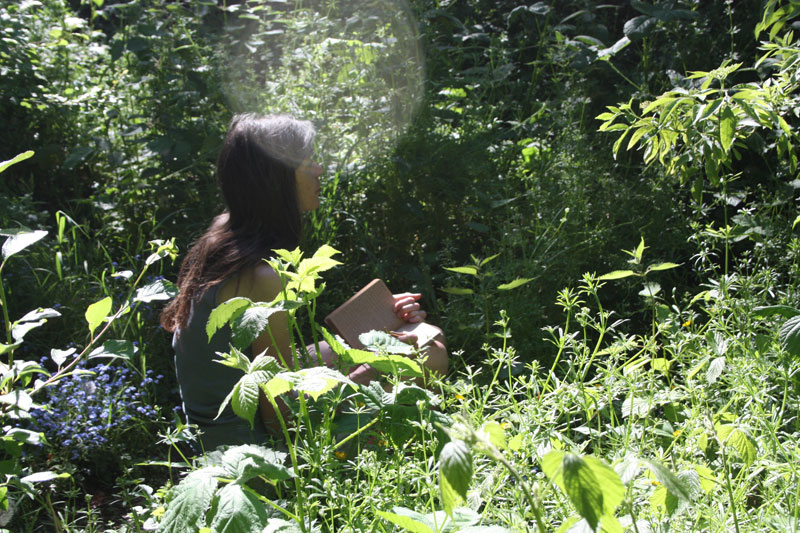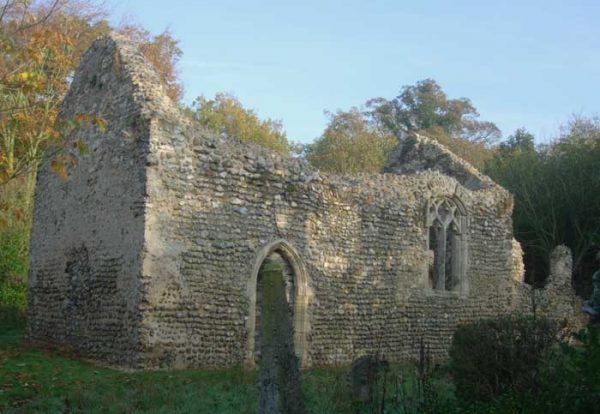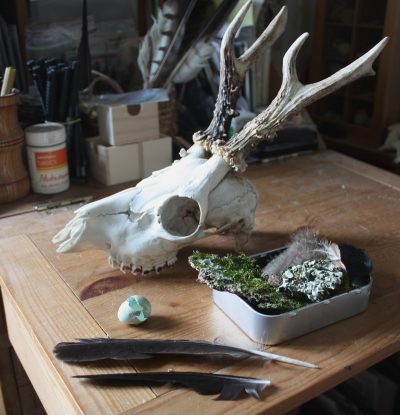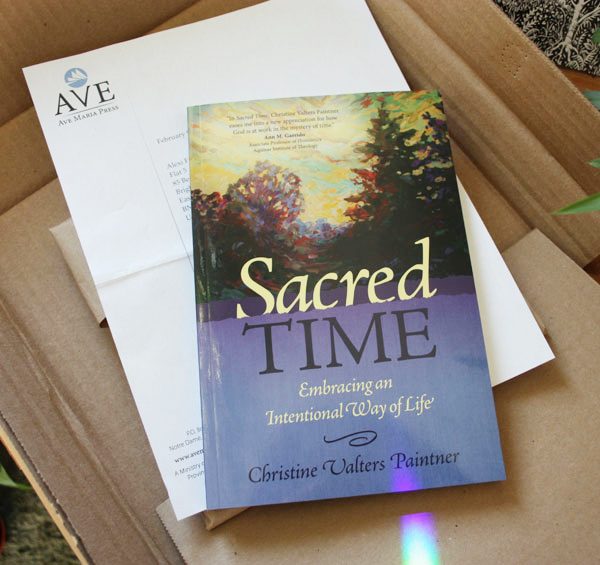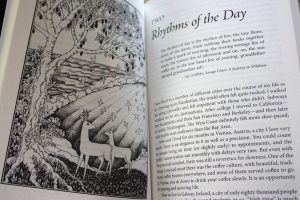I’m playing at being King Midas, gold-fingered, doodling with gold paint. I was very grateful to be given some blank notebooks for Christmas by a friend who knows how much I value them for writing my diary. I decided to decorate the covers with pen and gold paint.

I found it interesting to discover that Gold came into being in supernova explosions and by the clash of neutron stars. It’s been present in the dust of the universe from which the solar system formed. A lovely, mind-blowing thought on a wintry day.
I first started doodling tall, lanky, gold trees against a dark, starry sky on one book. Then, on another, I doodled brambles surrounding a fox contained within an ouroborus, that snake circling to bite it’s own tale, an ancient symbol of alchemy meaning infinity, beginnings and ends. In every end there is a new beginning. A fox had to appear somewhere on a book as it seems to be one of my totem animals.
It’s the end of the year and I’m not sad to say goodbye to it. It’s been a mixed year of trying to make things work, disconnection from my best self and minor struggles. But I’m not complaining, I’m grateful in many ways.
Recently I’ve been wanting to make a deck of oracle cards, so I have started in the same gold vein. Here is one – again with an ouroborus, but this time containing a mountain. It signifies distant lands, dreams, hopes and contemplation for me. I would like to know your thoughts about it’s meaning too.
I’ve blended gold acrylic paint with pearlescent acrylic inks in mauve, red and blue. The photo features a fossilised mollusc I was given for Christmas by my sister (a nautilus or an ammonite?). It’s amazing to think that it’s the beautiful trace left by a beautiful creature that, no doubt, lived in a tropical sea millions of years ago. Treasure – and far more precious than gold to me.
I’ll buy some more kraft card and continue to make more oracle cards as and when I feel inspired, until I have a deck. I’ll let the images come to me. If any of you have ideas, I’d love to hear of them and then I’ll try to capture them on cards.
Anyway, wishing you a very happy 2022.
